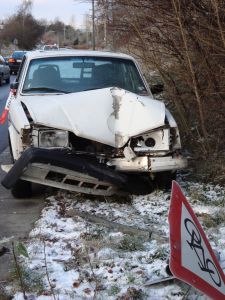A Highland Park, Illinois girl pled guilty last week to reckless homicide and was found guilty by a judge for aggravated DUI in a 2012 case that injured three and left a 5-year-old girl dead. The teen faces up to five years imprisonment on the reckless homicide case, and up to 14 years imprisonment in the DUI case. The girl had been released from drug rehab two weeks prior to the accident.
Illinois Reckless Homicide
An individual commits reckless homicide in Illinois if she “unintentionally kills an individual while driving a vehicle.” If no vehicle was involved, the death would be considered involuntary manslaughter under Illinois law.
In this case, the defendant passed out while driving her car and hit the young girl before crashing into a car. When she woke up, she backed up – hitting the girl a second time – and then, in her groggy state, ran over the girl one final time. The defendant admitted to police on the scene that she caused the crash.
In all criminal cases, an experienced attorney will strive to gain an outright dismissal or a reduction of charges. In some cases, however, where it is clear that the defendant committed the crime – as in this case, where not only did she admit her actions to police on the scene, but also there were numerous eyewitnesses – entering a guilty plea was the best defense. Because the judge can grant probation in a reckless homicide case, entering a guilty plea may be the best chance at gaining leniency from the court in sentencing.
Illinois Aggravated DUI
As admitted by the defendant and her attorney, the defendant caused the crash, which seemed to be the result of her huffing from a computer air duster while driving. The defense argued that not all inhalants are listed as intoxicants under Illinois state law, and in fact the Illinois Use of Intoxicating Compounds Act does not prohibit the use of difluoroethane, or DFE, which was the substance found in the defendant’s system at the time of her arrest.
This is not the first time the issue of whether DFE is considered an intoxicant for purposes of a DUI charge has been at issue. In 2012, the Second District Court of Appeals in Wisconsin overturned a conviction on a similar DUI charge. The court agreed with the defense that DFE was not listed in the Wisconsin statutes as a prohibited intoxicant, and that the defendant could not be found to have been in violation of the state’s DUI laws. In that case, the defendant inhaled the substance from a computer air spray can, like the one the defendant used in this case.
It is unclear from this case why the judge convicted the defendant of aggravated DUI despite the fact that DFE is clearly not listed under Illinois law as a prohibited intoxicant. The only rationale is a seeming catch-all phrase in the statute, which includes as a prohibited substance “any other substance for the purpose of inducing a condition of intoxication.”
Since DFE is not specifically listed as a prohibited substance, despite being a primary chemical in air spray cans, the assumption should be that it is not an intoxicant. In this type of case (and there is no implication that the defense in this case did not do these things), an experienced attorney could turn to a team of medical experts to look for other reasons the defendant may have passed out while driving that were unrelated to the DFE in her system.
Regardless of whether the blackout was or was not caused by the DFE, an appeal should be submitted immediately. The judge had no basis for finding that DFE was an intoxicant based on the plain language of the statute, and precedent – even though from another state – supports overturning the conviction. Continue reading
 Chicago has struggled to get rid of its reputation as the murder capital of the world. Some would argue that Johannesburg in South Africa and some cities in Middle East would give Chicago a run for its money. However the reality is that there are far too many homicides in the state. It is almost always a narrative of poor choices, deprived backgrounds, and a criminal justice system that is hard-pressed to cope with the epidemic. Malik Causey is a case in point. Starting with petty theft and teenage rebellion; he ended up in a gang and was soon shot by a rival. His mother Monique Causey describes how she desperately wanted the police to arrest her son in order to keep him off the streets, and by extension the gangs that he had admired so much in his teenage years and then proceeded to join with disastrous consequences.
Chicago has struggled to get rid of its reputation as the murder capital of the world. Some would argue that Johannesburg in South Africa and some cities in Middle East would give Chicago a run for its money. However the reality is that there are far too many homicides in the state. It is almost always a narrative of poor choices, deprived backgrounds, and a criminal justice system that is hard-pressed to cope with the epidemic. Malik Causey is a case in point. Starting with petty theft and teenage rebellion; he ended up in a gang and was soon shot by a rival. His mother Monique Causey describes how she desperately wanted the police to arrest her son in order to keep him off the streets, and by extension the gangs that he had admired so much in his teenage years and then proceeded to join with disastrous consequences.  Chicago Criminal Lawyer Blog
Chicago Criminal Lawyer Blog






